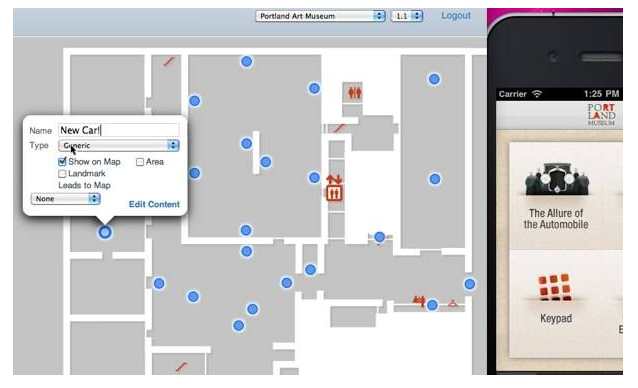**I. Project Overview**
**1.1 Project Summary**
Currently, many large shopping malls and indoor venues provide only basic floor plans, which can be challenging for users to navigate quickly and efficiently. To address this issue, we have developed a multi-functional indoor navigation system based on the iNEMO platform from STMicroelectronics. This solution aims to offer a more user-friendly, efficient, and accurate navigation experience for large indoor spaces.
The system integrates various sensors, including a three-axis gyroscope on the STEVAL-MK1062V2 development board, which measures angular velocity to determine direction. A linear acceleration sensor and geomagnetic module help calculate displacement, while temperature and pressure sensors provide additional environmental data. All collected data is transmitted via Wi-Fi to an Android smartphone, where it is processed and displayed in real time.
Compared to traditional floor plans, our navigator offers personalized, convenient, and cross-floor navigation services. It allows users to locate their position accurately and find the most efficient route to their destination, even across multiple floors.

**1.2 Project Background / Motivation**
As large-scale shopping centers and entertainment venues continue to grow, they often become complex environments with numerous shops, restaurants, and facilities. While these spaces attract customers, they also create common challenges such as:
- How to find the fastest route without relying on static floor plans?
- How to navigate between different floors efficiently?
- How to locate a lost companion quickly?
- How to escape rapidly during an emergency?
These issues highlight the need for a more intelligent and responsive navigation tool. Our indoor navigator aims to provide precise directions, distance calculations, and optimal routing, significantly reducing the time spent on navigation.
For the computing and display platform, we chose an Android smartphone due to its portability, fast processing power, and widespread use. Android’s open ecosystem and rich development environment make it ideal for integrating sensor data and delivering a smooth user experience. With Android surpassing other platforms in popularity, it offers a strong foundation for future enhancements like voice recognition and audio guidance—features that could resemble a "guide dog" for visually impaired users.
**Advantages of Android:**
- **Openness:** Encourages wide participation from developers and manufacturers.
- **Freedom:** Users enjoy greater flexibility and fewer restrictions.
- **Hardware Diversity:** Supports a wide range of devices with unique features.
- **Developer-Friendly:** Offers a flexible and accessible development environment.
- **Google Integration:** Seamlessly connects with Google services and apps.
Based on these factors, we have chosen Android as the core platform for our project. We also plan to expand the system with additional smart features to enhance usability and accessibility.
**II. Requirements Analysis**
**2.1 Functional Requirements**
1. Real-time collection of environmental data to help users understand their surroundings.
2. Continuous tracking of user movement to update location information.
3. Map storage and updating, with dynamic guidance based on user location and destination.
4. Wireless communication between the experiment board and the Android device for real-time data transfer.
5. A clear and organized display interface on the Android platform.
6. Position correction features to improve accuracy and reliability.
**2.2 Performance Standards**
1. Temperature measurement error must not exceed 0.5°C.
2. Position accuracy should be within 10 meters at a 200-meter reference point.
3. Road and direction identification must be accurate and effective during navigation.
4. Stair and elevator navigation must be clearly recognized and guided.
5. The system should intelligently select routes in complex indoor environments.
6. Real-time location updates on the mobile device should be smooth and delay-free.
Ceramic Base,Electrical Alumina Ceramic,Alumina Ceramic Base,Alumina Engineering Ceramics
Yixing Guangming Special Ceramics Co.,Ltd , https://www.yxgmtc.com
